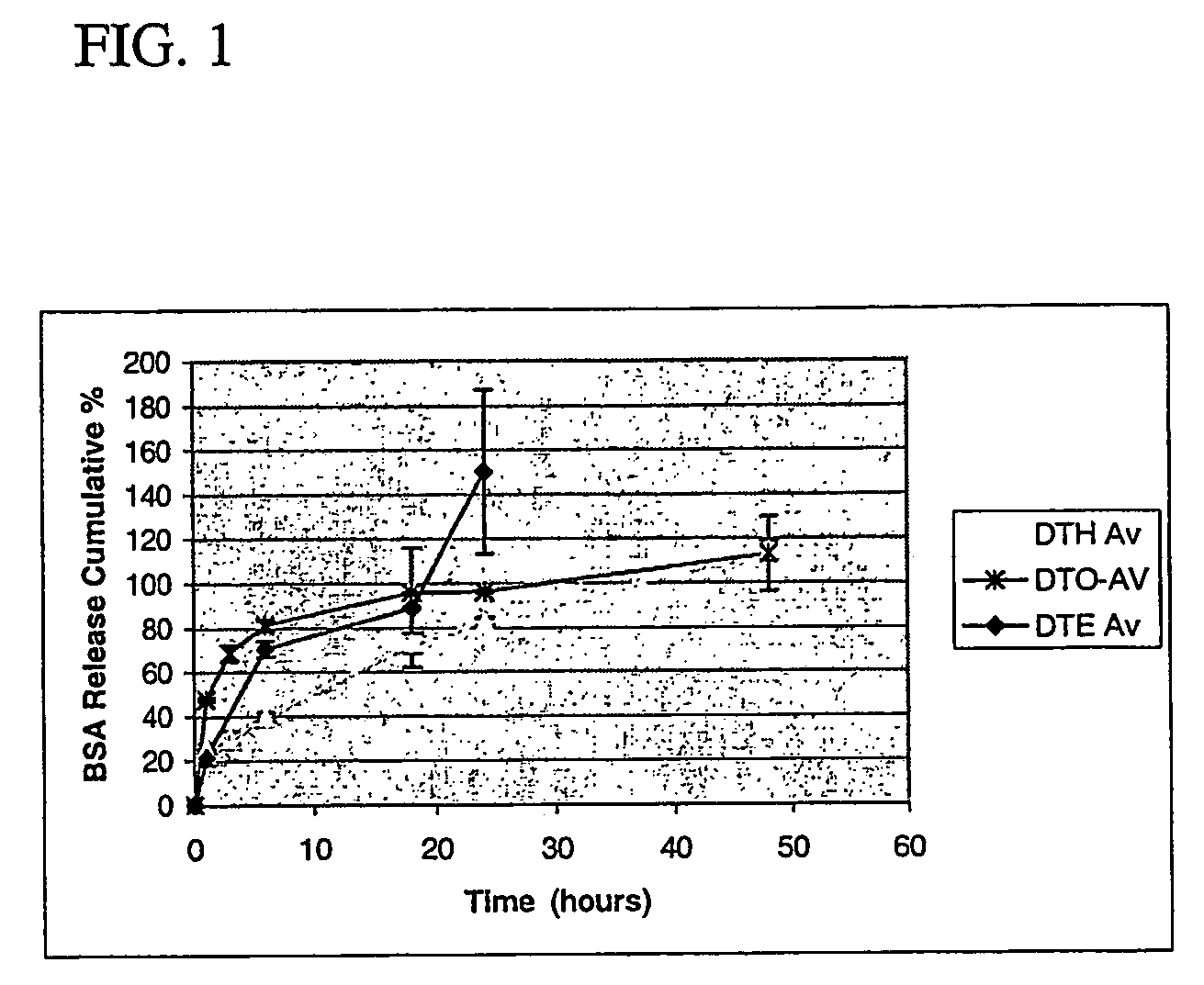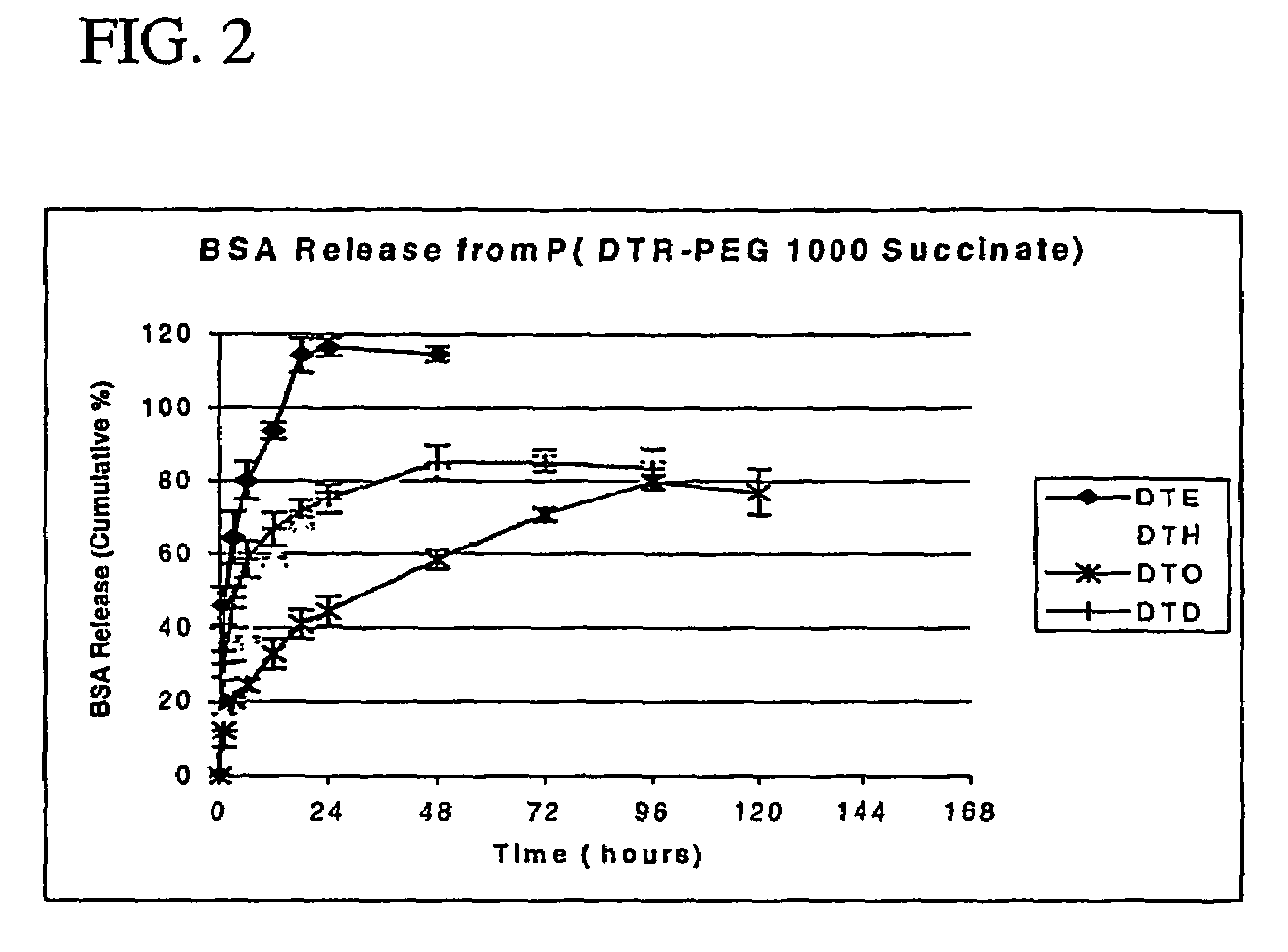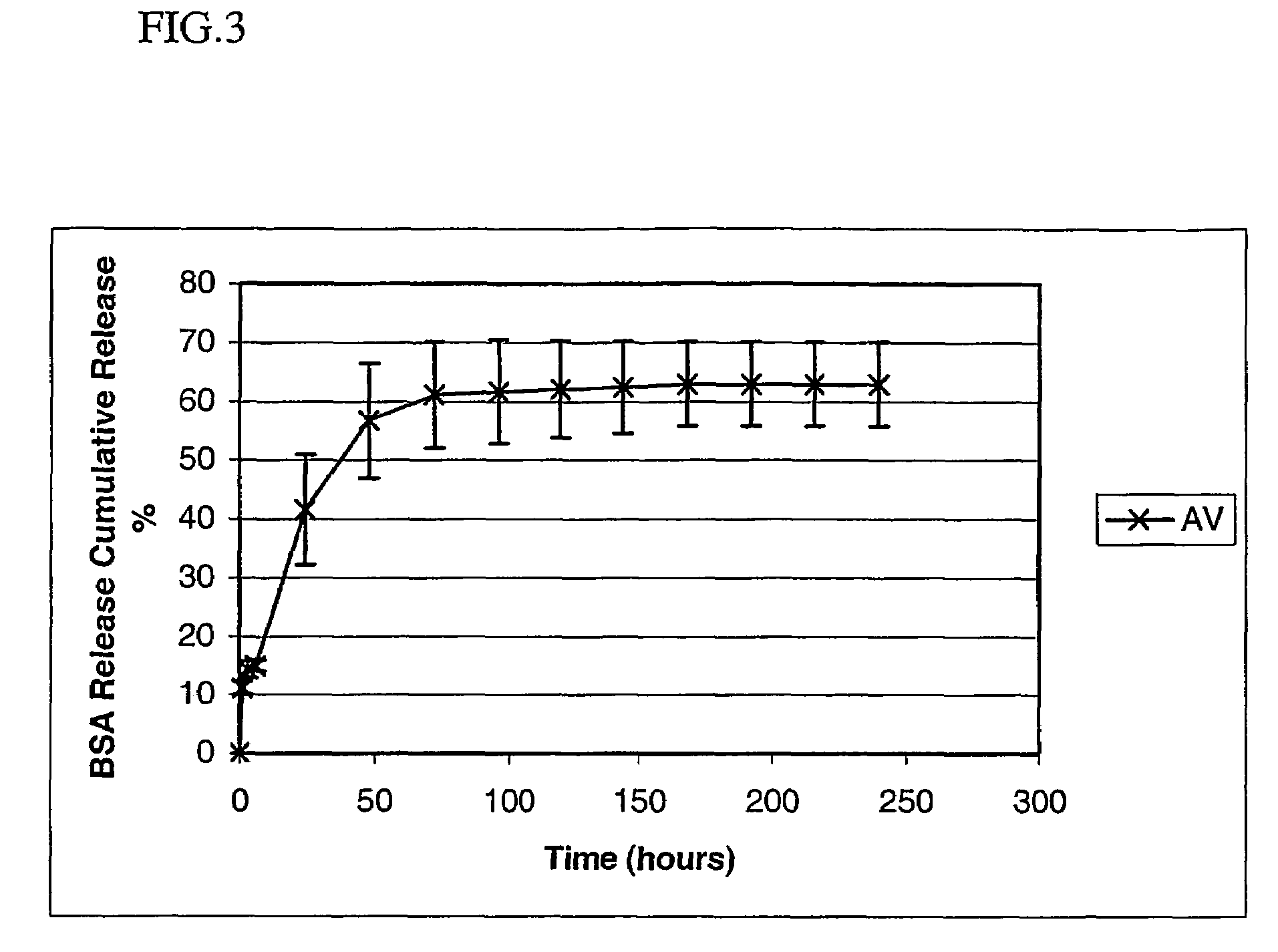Polyarylates for drug delivery and tissue engineering
a technology of polyarylates and drug delivery, applied in the field of bioerodable polyarylates, can solve the problems of small number of successful commercial formulations, harmful to protein stability and activity, and maintain stability, and achieve low melting/softening points, facilitate formulation, and improve the overall physicomechanical properties
- Summary
- Abstract
- Description
- Claims
- Application Information
AI Technical Summary
Benefits of technology
Problems solved by technology
Method used
Image
Examples
example 1
Preparation of DTE-PEG-1000-suc
[0060]2.644 g (0.0074 mols) of DTE and 0.653 g (0.0022 mols) of DPTS were weighed into a 125 mL round-bottom flask containing an egg-shaped magnetic stirring bar. 8.927 g of PEG-1000-succinate was weighed into a 50 mL Ehrlenmeyer flask. Using 26 mL methylene chloride, the PEG compound was transferred quantitatively to the round-bottom flask. The mixture was stirred until a pale yellow solution was obtained. 3.59 mL DIPC was added with stirring. The reaction mixture heated up and started to boil. Within 20 to 30 minutes, the solution became very viscous and stirring stopped. The reaction was stirred overnight.
[0061]The polymer solution was added to 800 mL of isopropyl alcohol (IPA) with stirring. The polymer precipitated and collected as a ball. After decanting the IPA solution, the polymer was shredded by hand and washed with IPA. The polymer was dissolved in methylene chloride and washed with water in a separatory funnel. The polymer was isolated from...
example 2
Preparation of DTE-PEG-600
[0062]Example 1 was repeated, substituting carboxymethyl PEG-600 for PEG-1000-succinate.
example 3
Composites of PEG-polyarylates with Calcium Sulfate
[0063]The polyarylate of Example 1 was mixed thoroughly with calcium sulfate particles (particle size 10-20 mesh) with a stainless steel spatula. The wt. % of calcium sulfate was varied from 10 to 95%. Approximately 2 g of polyarylate was mixed with each of the various weight percentages of solid calcium sulfate. The observations are summarized in Table II:.
[0064]
TABLE IIComposites of DTE-PEG1K-suc with calcium sulfate (particle size10-20 mesh)Wt. %CalciumsulfateObservation10The polymer flows and tacky25The polymer flows and tacky50Polymer flows slower along with solid particles.75Polymer flows relatively slower (than 50%composite) along with solid. Solid (calciumsulfate particles) and polymer settle at beakerbottom overnight90Composite can be shaped by hand; polymerdoesn't flow95Composite can be shaped by hand; polymerdoesn't flow
PUM
| Property | Measurement | Unit |
|---|---|---|
| temperatures | aaaaa | aaaaa |
| Tg | aaaaa | aaaaa |
| weight-average molecular weight | aaaaa | aaaaa |
Abstract
Description
Claims
Application Information
 Login to View More
Login to View More - R&D
- Intellectual Property
- Life Sciences
- Materials
- Tech Scout
- Unparalleled Data Quality
- Higher Quality Content
- 60% Fewer Hallucinations
Browse by: Latest US Patents, China's latest patents, Technical Efficacy Thesaurus, Application Domain, Technology Topic, Popular Technical Reports.
© 2025 PatSnap. All rights reserved.Legal|Privacy policy|Modern Slavery Act Transparency Statement|Sitemap|About US| Contact US: help@patsnap.com



